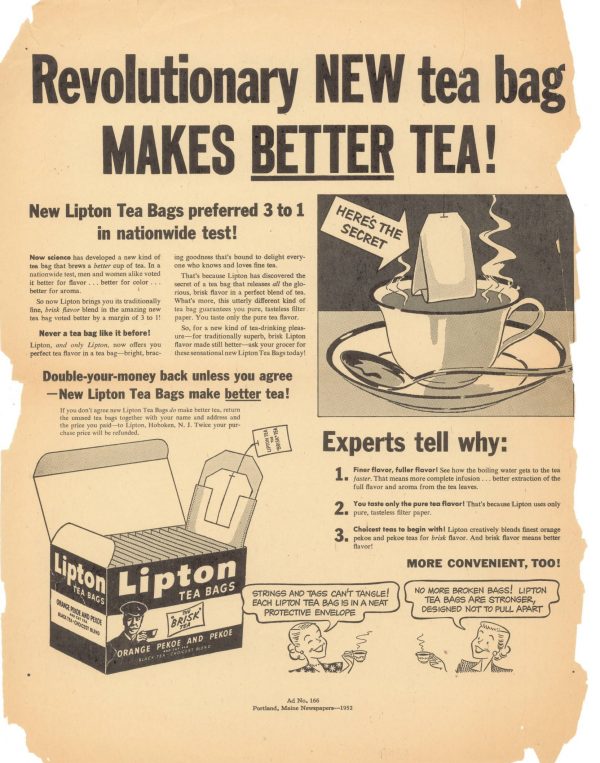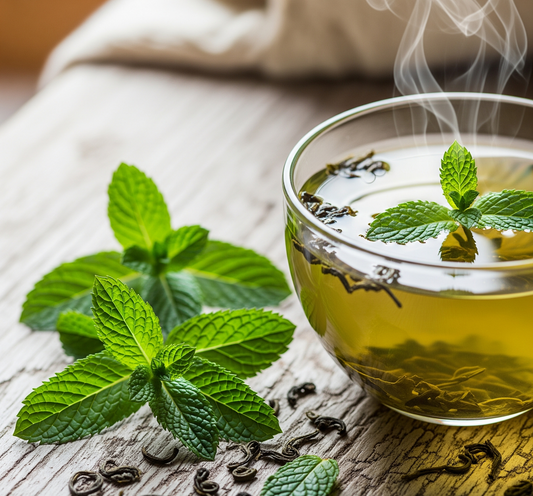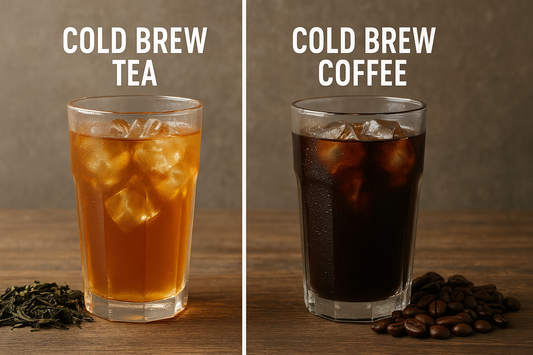Introduction:
Tea is the most beloved and enjoyed beverage in the world, most consumed after water. With a rich cultural heritage, tea has been enjoyed all over the world for centuries. And with the invention of tea bags, the global tea-drinking culture has grown even more ubiquitous.
Tea bags have a range of uses today. From using tea bag grounds to make manure, to its topical use in skincare, under-eye brightening and pain relief from migraines and toothaches, tea bags are used in a range of household and beauty projects.

From its serendipitous beginnings to its widespread adoption, let us embark on a journey through time to explore the fascinating history of tea bags.
Early Origins:
We tend to think of tea bags as a recent invention in the long history of tea. However, the idea of using porous bags to infuse tea into delicious brews dates back to ancient China, during the 7th century Tang Dynasty. These early tea bags were not made for single servings as most tea bags are used now but were more like what we now know as ‘tea pillows’ or ‘tea sacks. They were mainly used for storing and transporting tea, keeping the tea leaves dry and fresh.
The Accidental Invention:
Centuries later, in the 20th century, the story of the tea bags we know and love today began. In 1904, a tea merchant from New York, Thomas Sullivan was looking for a way to transport loose tea samples to his customers across the Atlantic. He needed to find a way to preserve the freshness and quality of the loose-leaf tea as it travelled long distances to his customers.
So, he packed his loose-leaf teas into small, silk pouches. Though he intended for his customers to pour out the leaves before steeping them, some customers brewed their loose-leaf tea by directly plunging the pouches, tea and all, into hot water.
Though Sullivan was surprised by this turn of events, he saw the potential of this misunderstanding. Embracing the convenience of tea bags, he began producing and distributing commercial tea bags.
Customers warm up to the idea:
To this day, traditional tea drinks favor loose leaf teas for their strong flavors and rich aromas. Because the market is flooded with low-cost tea bags that are filled with broken tea leaves and fannings, which are low-grade tea leaves left-over during the tea production process, leading to weak and astringent flavors of tea, a lot of tea connoisseurs reject the use of tea bags.
Back in the day, there was even more of a resistance to using tea bags among lovers of tea. The concept of using pre-packaged tea was new and was considered unconventional. Many tea purists even considered it a sacrilege to ancient tea drinking traditions.
However, as time went on, tea bags began to gain acceptance due to their practicality and convenience.
The Roaring Success in the 1950s:
In the age of strong marketing efforts and advertising campaigns, tea bags began to take off. As the world embraced modernity, fast-paced lives and convenience, these advertising efforts that highlighted the convenient brewing and cleanup of tea bags resonated with busy customers.
The ease of preparation of tea, and not having to clean up the loose leaves out of tea pots and strainers were huge selling points for tea bags. This catapulted tea bags to mainstream popularity in the USA and UK. Today, tea bags have largely replaced the use of loose-leaf tea in the mainstream market.
Not to mention, the idea that to brew a delicious cup of tea, the leaves must be removed from the brew after a certain amount of time. As tea bags are easily removed from the brew, they were considered an easier switch from tea leaves for those who weren’t confident in their brewing skills.
Tea Bags through History: Innovation of Materials.
The first tea bags were hand-sewn and made of silk and gauze. However, after receiving complaints from his consumers that the silk mesh was too fine, not allowing the tea to infuse into the water properly, Sullivan developed tea bags that were made entirely of gauze.
Starting from the 1940s, tea bags started to be made entirely of filter paper. Filter paper allowed water to fully pass through while also leaving the tea leaves intact. Because they were also the most cost-effective material and extremely convenient for mass production, as they didn’t require expensive materials like silk and didn’t require sewing, filter paper tea bags revolutionized the tea industry and flooded the tea markets. Variations of the filter paper tea bags are still in use today.
Impact on the Global Tea Industry:
Tea bags have become a staple in households worldwide, spreading across North America and Europe to Asia, Africa and beyond. An extensive range of tea bag blends and flavors are available today. In fact, many regular tea drinkers today wouldn’t know how to brew a cup of tea without tea bags!

Tea Bags Today:
Back in the day, tea bags came in two sizes. The smaller set of tea bags would be used to brew single servings of tea, while larger tea bags were also available to steep in larger tea pots and make several servings of tea.
Today, single serving tea bags are popularly found on the market. The problem with small sized tea bags used for single serving of tea is that the bag is too small for whole leaf teas, unlike broken leaves and fannings (tea leaf dust), to fully unfurl and release all their flavor. Therefore, pyramid tea bags are made to give higher quality leaves the space to fully unfurl, allowing tea drinkers to brew richer teas while also opting for the convenience of tea bags.
The problem with tea bags sold today, along with most pyramid tea bags available on the market, is that they are made of bleached paper or plastics. Not only are the plastic tea bags non-biodegradable and therefore difficult to clean-up from the environment, harming ocean-life, river systems and soil ecosystems, but they are also harmful to tea drinkers.
When plastic tea bags are dipped into hot water, they release up to 11.6 billion microplastics into a cup of tea. These microplastics are toxic to the body, and can lead to a myriad of health issues.
Luckily, tea drinkers and tea makers are growing more conscientious of the environment and their own health, opting for plastic-free and compostable tea bags. In order to provide tea drinkers with the convenience of tea bags while also caring for their well-being, Nepal Tea Collective is launching compostable, plastic-free line of whole-leaf tea bags.

Conclusion:
The history of tea bags is a tale of accidental discovery, innovative engineering, and mass appeal. From humble beginnings to global acceptance, these small, convenient pouches have forever changed the way we prepare and enjoy our beloved cup of tea. As the world continues to evolve, one thing is certain – the tea bag's journey is far from over, and its future holds exciting possibilities.





